Embarking on a journey through the annals of human history, we delve into the fascinating realm of ancient mathematics, uncovering a collection of venerable artifacts that have withstood the test of time for up to 20,000 years. From the intricate markings on the Ishango Bone in the Democratic Republic of Congo to the symbolic three-dimensional clay counters of Mesopotamia, this exploration unveils the enduring legacy of early mathematical endeavors. Join us as we unveil the top 10 oldest ancient math artifacts, each whispering tales of numerical prowess and intellectual curiosity from civilizations long past.
The List of the 10 Oldest Ancient Math Artifacts
10. Bamboo Multiplication Table
290 BC – 2,300 Years Old
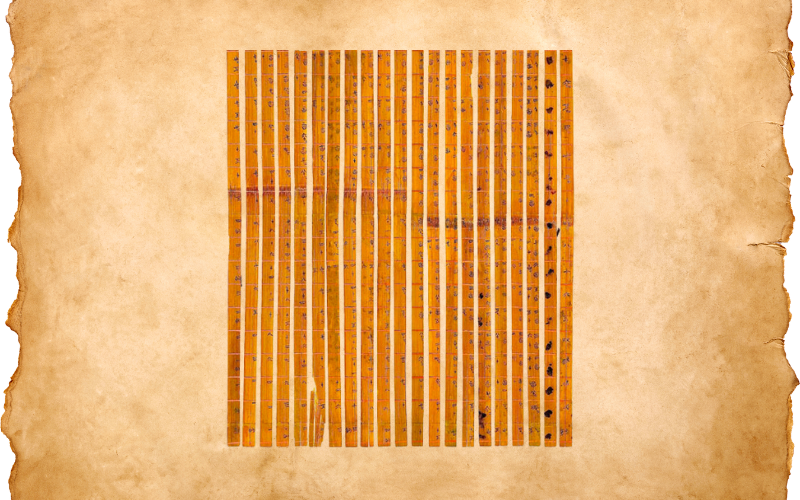
In this collection, you’ll find 21 Bamboo Strips crafted approximately 2300 years ago in China. When properly arranged, these strips compose a multiplication table in base 10, skillfully inscribed in ancient Chinese calligraphy.
Unlike earlier civilizations, such as the Babylonians who devised multiplication tables in base 60, this discovery stands as the oldest known decimal multiplication table. Remarkably, its structure closely resembles the multiplication tables still in use today.
9. Tomb of Menna
1420 BC – 3,442 Years Old
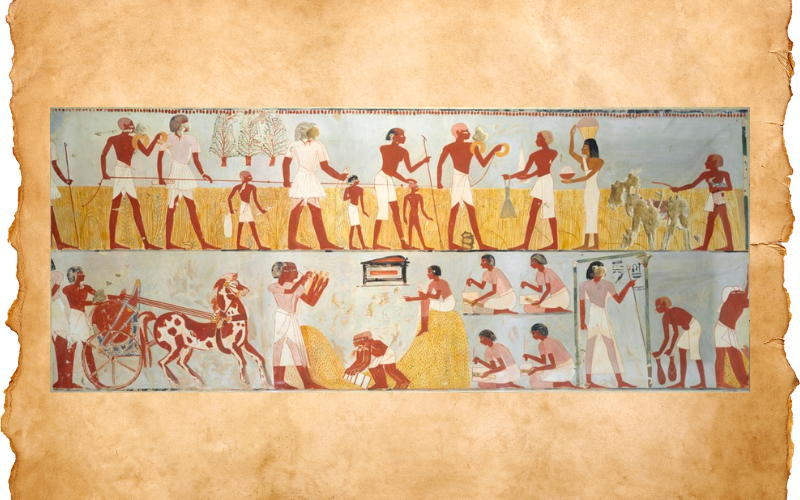
Menna served as a principal scribe in ancient Egypt, overseeing the measurement of agricultural field sizes, examining crop yields, and providing reports to the central field administration under the Pharaoh. Additionally, he was responsible for tax calculations.
The murals adorning his tomb vividly depict the diverse methods of measurement and calculation employed over 3,000 years ago. One illustrative example from the wall paintings showcases the use of ropes with evenly spaced knots for measuring substantial distances, offering insights into ancient techniques.
8. The Rhind Papyrus
1550 BC – 3,572 Years Old
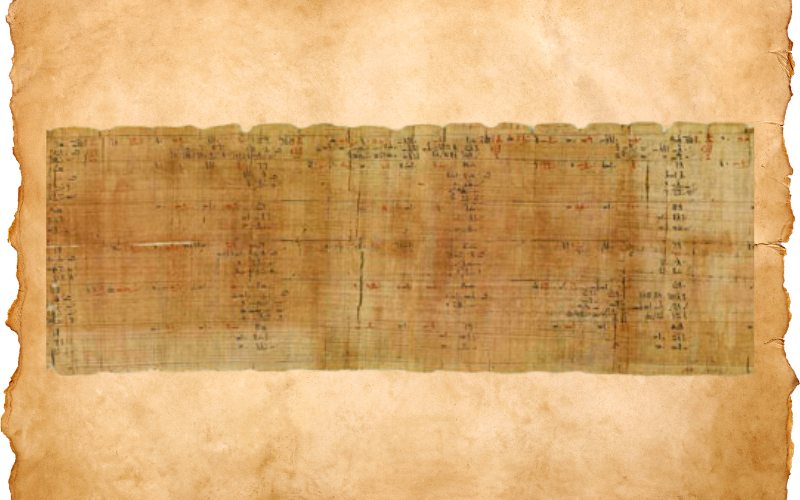
The Rhind Papyrus stands as one of ancient Egypt’s most renowned mathematical manuscripts, authored by a scribe named Ahmose, possibly the earliest historical contributor to mathematics whose name endures.
Measuring approximately 2 meters in length, this papyrus encompasses 84 mathematical problems covering multiplication, division, fractions, and geometry. It likely served as a quasi-“textbook” for other scribes.
A particularly noteworthy segment features a 2/n table, revealing the representation of rational numbers in the form 2/n, where n is an odd number, expressed as the sum of unit fractions.
Named after Scottish antiquarian Alexander Henry Rhind, who acquired it in Luxor, Egypt, the papyrus presently resides mostly at the British Museum in London.
Read More Fun Facts
Learn more fun facts with Trivia Mastermind content.
7. Plimpton 322 Babylonian Tablet
1750 BC – 3,722 Years Old
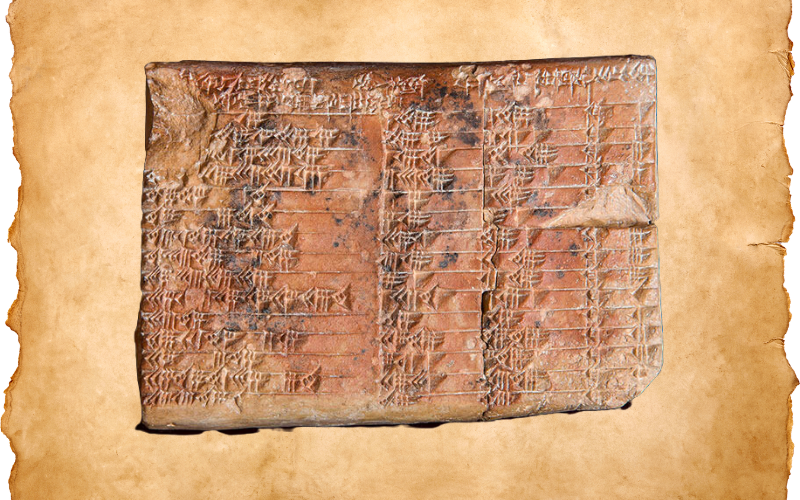
Crafted in Sumeria during the reign of Hammurabi the Great, this Babylonian clay tablet, known as Plimpton 322, predates Pythagoras by more than 1000 years.
Contained within its rows and columns are Pythagorean triples, providing integer solutions to the equation a²+b²=c². For instance, (3, 4, 5) qualifies as a Pythagorean triple because 3² + 4² = 5².
Archaeologists have debated the tablet’s precise purpose. Some propose it as a “teacher’s aid” intended to facilitate the generation of right-angled triangles, while others speculate that it may represent an early form of trigonometry table.
6. YBC 7289 Circular Tablet
1800 BC – 3,800 Years Old
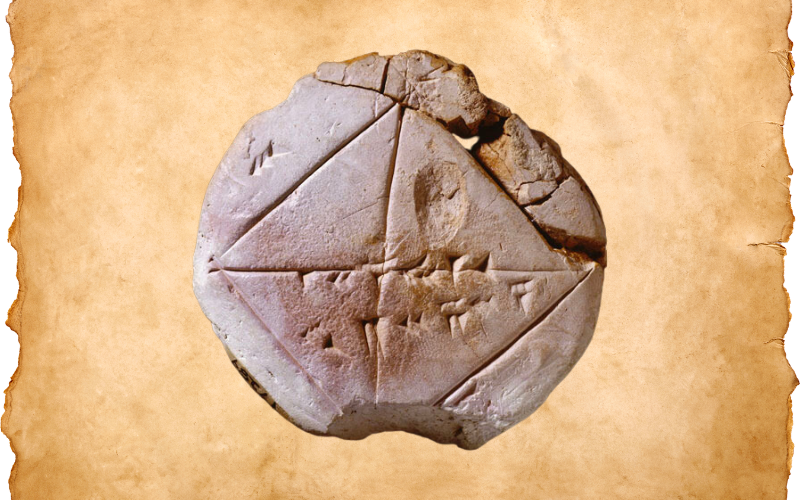
Originating from ancient Babylon, the circular tablet housed in the Yale Babylonian Collection, identified as YBC 7289, features a geometric representation of a square alongside its diagonals.
Expressed in cuneiform numerals, the tablet specifies that one side of the square measures 30 units, elucidating the method for determining the diagonal’s length: 30² + 30² ≈ 42 units.
Remarkably, this tablet attests to Babylonian scribes’ comprehension of Pythagoras’ theorem over 1000 years before Pythagoras himself. They demonstrated proficiency in calculating square roots and provided a remarkably precise estimate for √2, accurate to six decimal places—an unparalleled level of computational precision in the ancient world.
While it may have served as a mere exercise for an apprentice scribe, the tablet’s mathematical and historical significance looms large.
5. YBC 7290 Square Tablet
1800 BC – 3,800 Years Old
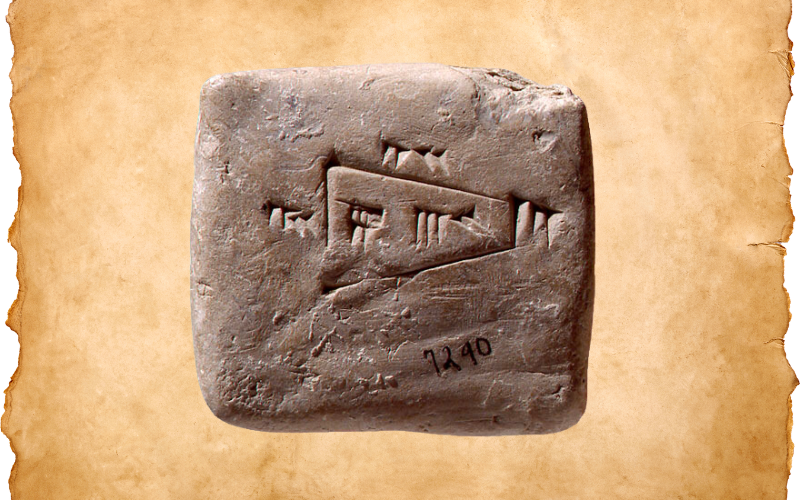
Within the Yale Babylonian Collection lies a clay tablet showcasing exercises undertaken by apprentice scribes. Specifically, Tablet YBC 7290 provides guidance on computing the area of diverse geometric shapes, illustrating the methodology for determining the area of a trapezium. This involves the multiplication of the average of the bases by the average of the sides.
Play Trivia!
Challenge yourself and play trivia questions with answers and explanations.
4. VAT 12593 Sumerian Multiplication Table
2600 BC – 4,640 Years Old
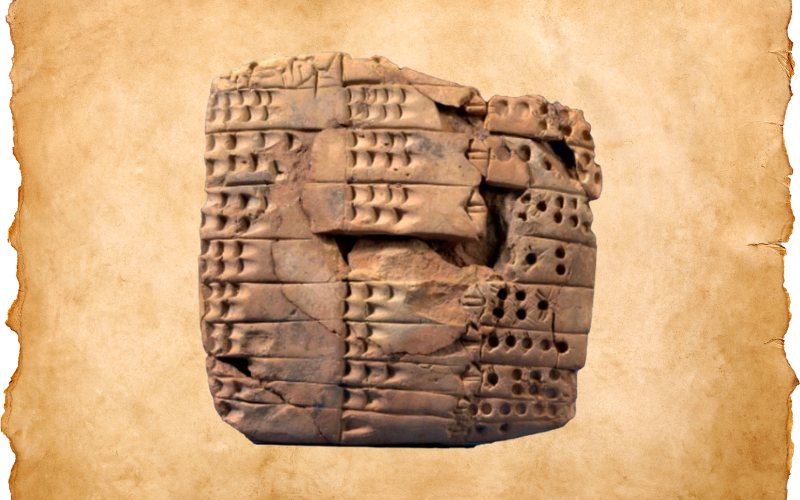
This tablet reveals a multiplication table originating from the ancient Sumerian city of Shuruppak, representing one of the earliest mathematical tablets uncovered to date.
Comprising three columns, the initial two columns showcase dots indicating distances spanning from approximately 6 meters to 3 kilometers. The third column displays the product of these distances, representing the area of a rectangle with the specified dimensions.
Situated in the historical region of Sumer within ancient Mesopotamia, the Sumerians pioneered Cuneiform, an early writing system formed by impressing wedge-shaped markers into clay tablets like the one in question. Additionally, they developed the base-60 number system.
3. MS 3047 Mesopotamian Tablet
2700 BC – 4,723 Years Old
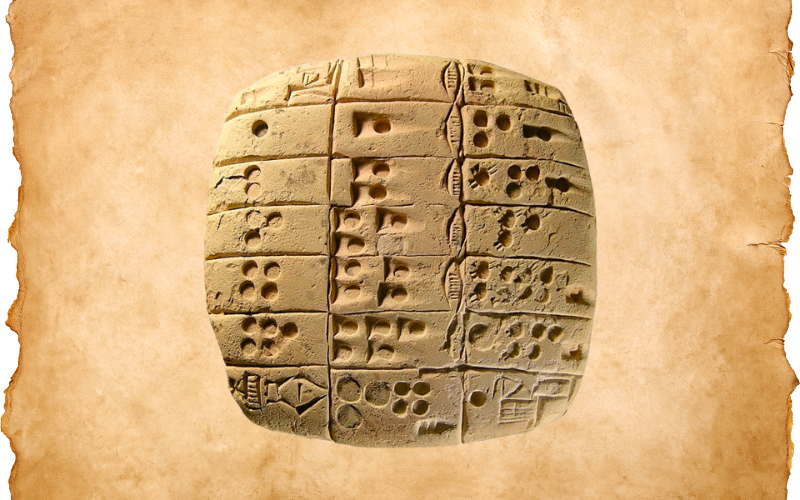
This clay tablet stands as the earliest documented instance of mathematical computations, crafted in Sumer, one of the earliest flourishing civilizations in the Middle East.
Engraved in cuneiform, it presents a multiplication table, possibly utilized as a tool for aspiring student scribes to acquire proficiency in mathematics.
2. Mesopotamian Accounting Tokens
4000 BC – 6,023 Years Old
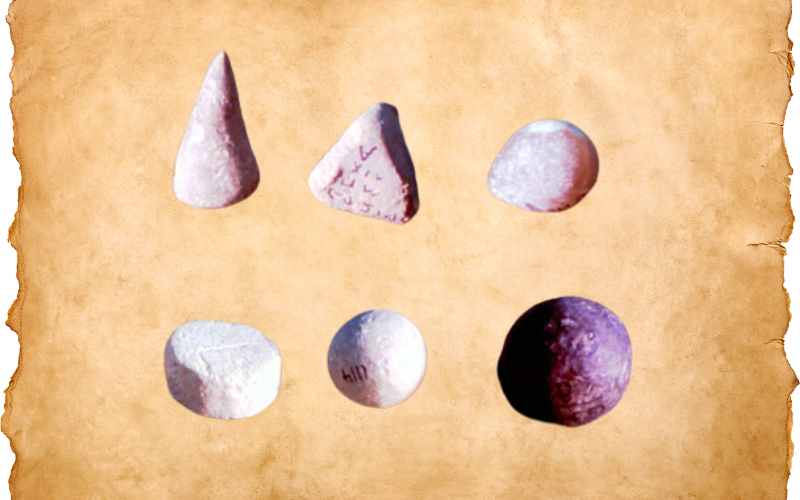
In ancient Mesopotamia, scribes and merchants pioneered the use of petite, three-dimensional clay objects as counters, symbolizing specific quantities, units, or commodities. Numerous artifacts of this kind have been unearthed at archaeological sites throughout the Middle East, exemplified by those discovered at Tepe Gawra in Iraq.
The cone, sphere, and flat disc were employed to denote small, medium, and large measures of grain, while the tetrahedron likely represented the amount of daily labor accomplished.
This practice eventually evolved into a more sophisticated technique wherein the counters were impressed into soft clay, forming a tangible record.
Remarkably, these rudimentary markings served as the precursors to cuneiform, one of the earliest writing systems in history.
1. Ishango Bone
18,000 BC – 20,016 Years Old
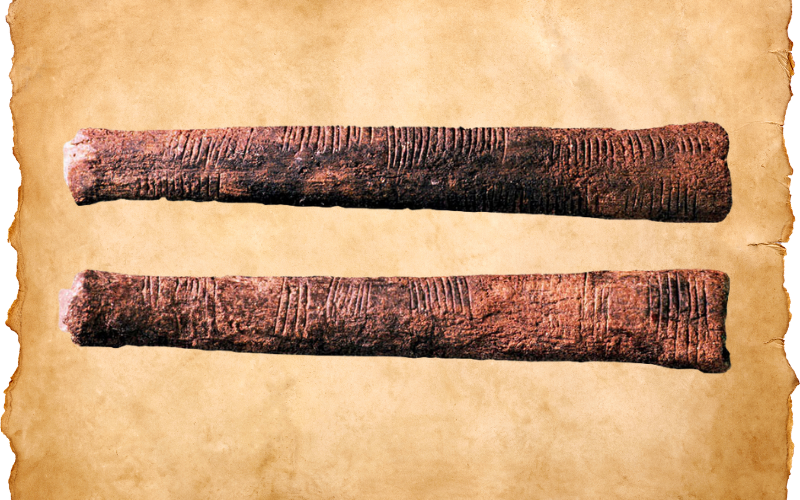
The Ishango Bone stands as a contender for the title of the oldest extant mathematical artifact. Unearthed in 1950 in the Democratic Republic of Congo, central Africa, and named after its discovery location, this bone hails from the Upper Paleolithic period of human history.
Measuring 10 cm in length, the bone is adorned with a sequence of notches, leading many scientists to theorize their purpose as a counting system. The arrangement of these notches hints at the possibility of a more sophisticated mathematical comprehension, potentially involving decimal or prime numbers.
Conclusion
In tracing the ancient footsteps of mathematical ingenuity, we’ve unearthed a treasure trove of artifacts that transcend time, reaching back as far as 20,000 years. From the Sumerian clay tablets to the Ishango Bone’s enigmatic notches, these relics offer glimpses into the minds of our mathematical forebears. As we conclude our exploration of the 10 oldest ancient math artifacts, it becomes evident that the pursuit of understanding numerical concepts is an enduring facet of human history. These artifacts stand as silent witnesses to the intellectual curiosity and problem-solving skills that have marked humanity’s journey through the ages, leaving an indelible imprint on the tapestry of our shared mathematical heritage.
Read More Fun Facts
Learn more fun facts with Trivia Mastermind content.
Play Trivia!
Challenge yourself and play trivia questions with answers and explanations.



